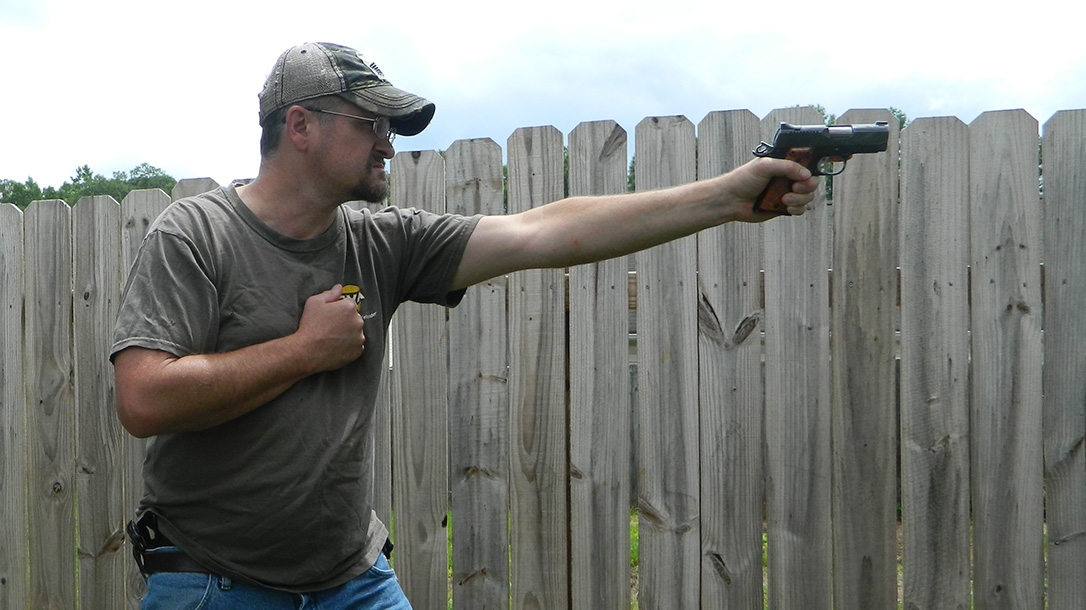In typical training, shooters spend time on accuracy, reloading and engagement, mostly using a two-hand grip. After all, that is how we’re probably going to fight off an attacker. However, what if one hand becomes injured? Even worse, what if your strong hand gets injured? At that point, whether it happens before or during an incident, you need an understanding of off hand shooting.
That is the whole point of training; you perfect skills before they become necessary. If the first time you to fire with your off or support hand is in the middle of an attack, you’re probably going to miss and lose. It is much harder to hold a gun steady one handed, much less when using the weak hand. Then, add in the stress of an attack, and everything goes south quick, particularly control and accuracy.
Advertisement — Continue Reading Below
That’s why gun owners need to train for situations that are unlikely to happen. It is improbable that the average person will ever face an attacker, but we still train for such as event. Those who train for the unlikely will be prepared if anything happens. However, off hand shooting provides additional benefits, such as forcing shooters to slow down and concentrate on the sights. Sending rounds downrange quickly doesn’t matter; rounds must be accurate to do any good. This is true regardless of which hand one uses to pull the trigger.
Off Hand Shooting Techniques
When it comes to pulling the trigger with the support hand, most shooters use two main techniques. Neither is wrong or right; the best stance and hold always comes from comfort. You are going to shoot better if you’re comfortable.
The first more closely fits a stance that many shooters understand. Most shooters call it a straight arm stance. Here, the shooter extends the arm until the elbow locks, holding the pistol straight up and down. Since most shooters hold a gun straight up in a regular situation, this style feels better to most. It’s similar, it’s comfortable, meaning it is more accurate for most. It also provides a known understanding of felt recoil.
Advertisement — Continue Reading Below
However, some shooters prefer to cant the pistol when performing off hand shooting. In this stance, the shoot still locks the elbow out, but does so with the gun canted to the inside about 10 to 30 degrees. This style provides better access to the strong eye, which takes over regardless of hand, if one shoots with both eyes open.
During all this, something must be done with the strong hand. Now, if it is injured in a fight, that point could be moot. If possible, though, as well as in training, one should press the hand against the chest. This helps provide balance when firing, rather than letting it swing, which can cause sights to waver. In a fight, this also keeps the hand and arm from hitting anything when retreating or moving to cover.
Being prepared is more than a choice, it is a lifestyle that requires constant effort. This includes training for situations that probably won’t happen. Those prepared for the unlikely can absolutely handle the possible.
Advertisement — Continue Reading Below
Obtain more training tips & tactics, as well as gun reviews by subscribing to Personal Defense World magazine.
























